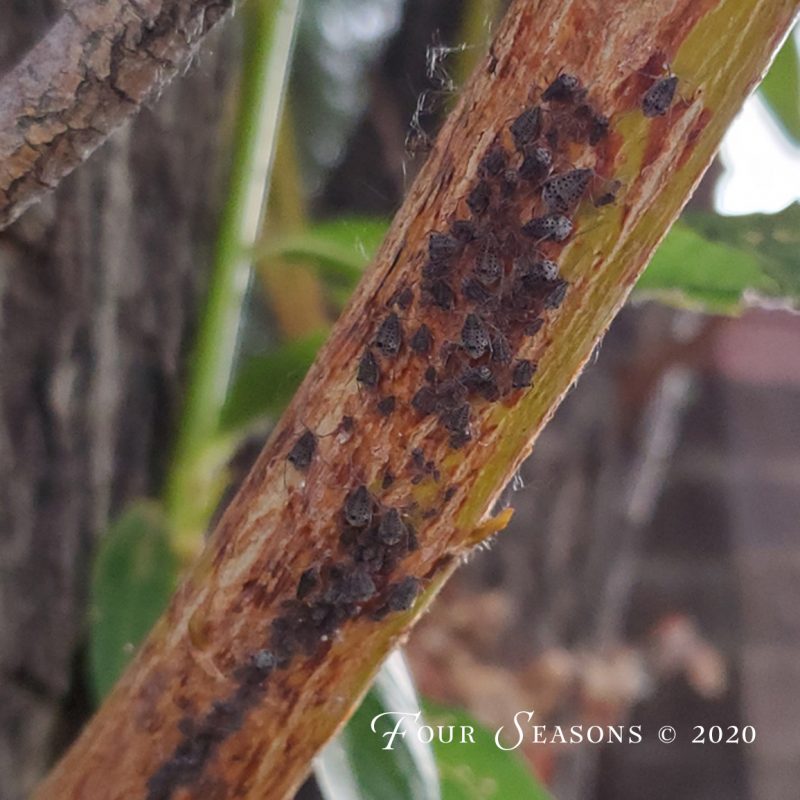It’s been a fabulous growing season so far. My squash are running rampant and we’re getting the first beans and tomatoes. Unfortunately, the bugs have also grown well this year, particularly aphids and we are seeing many people come into the garden center with bad infestations.
Aphids aren’t anything new to gardeners but can sometimes be confusing to spot them because they can come in just about every color of the rainbow and this camouflage hides them well. They are small pear shaped, soft bodied insects that are sap suckers so they do their damage by literally sucking the life out of your trees, shrubs, or perennials.
Symptoms of aphid infestation include leaves that will curl downwards or cup down, and leaves that will be distorted, wrinkled, or shriveled. They can also be spotted by the sticky residue they leave on leaves or sidewalks under the affected plants which, to me, is more annoying than the actual bugs.
If you do have aphids there are many treatments available for them. If you prefer an organic solution, try Neem oil. This is an organic, insecticidal oil sourced from the Neem tree and it works by effectively smothering the aphids. This is a spray so be sure to use when the wind is calm in order to avoid drift.
Another natural solution is to introduce ladybugs to your yard because ladybugs favorite food is aphids. They can be purchased at a garden center but be sure to put them in the fridge until around dusk, then release them in your garden. If you release them during the heat of the day, they’ll simply fly away. By releasing them at dusk, they will immediately crawl onto your plants as night approaches in the hunt for food. Ladybugs can eat up to 50 aphids per day so I think of them as buggy a vacuum cleaner for your plants!
If you prefer a chemical control, Eight is the new version of the gardeners old friend Sevin and it works well. It’s available in either a spray or dust but I prefer the dust for its staying power over the spray. If you use the dust, be sure to wet the leaves of the plant you are treating before applying as the water will help to keep the dust in place. Although it is not an organic control, it can safely be used in home vegetable gardens, following label directions.
If you need bigger guns to fight your infestation, then our go-to is Annual Tree and Shrub Systemic. I like this product because after you apply it, it travels upwards through the system of the plant to fight a wide variety of bugs. As they feed on the leaves, they ingest the poison and voila- no more bugs. I also like it because you only have to use it once a year. The nice thing about a systemic is that it is easily applied to the roots, so if your tree is very large, you don’t have to worry about trying to reach it with a sprayer. Be sure not to use this on anything edible however- vegetables, fruit trees, etc as the fruit and veggies will be contaminated with the poison as well.
It’s important to get these little critters cleaned up at any time of the year but especially to do so before major damage can be done. Although they can’t kill a well established tree, it is possible for them to stunt it if not treated. Like any infestation, the longer it goes untreated, the worse it will be and the more difficult to deal with.

